Wiring and piping: analogies and differences
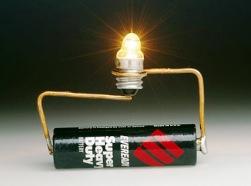 Being an electrician, one often encounters the fact that people who are completely healthy and developed both physically and mentally experience a state of awe of electricity. At the same time, say, the installation of water supply and sewage does not seem very complicated to them.
Being an electrician, one often encounters the fact that people who are completely healthy and developed both physically and mentally experience a state of awe of electricity. At the same time, say, the installation of water supply and sewage does not seem very complicated to them.
Still: water runs to itself through pipes under pressure, and through pipes of larger diameter it is diverted to the sewer - everything is “easier than a steamed turnip”. It’s just a pity for those people who anxiously look at the outlet that sparks out and are waiting for an electrician to replace it.
And since for many people who are afraid of electricity, the plumbing seems to be arranged more simply, then we will give some physical analogies between the electric current and the flow of water. In what direction does the water run? From a point with more pressure - to a point with less. Between points with the same pressure on the walls of the pipe, there will be no water flow ...
The development of the electronic components base
 In 1898, in the illustrated weekly journal The Journal of Newest Discoveries and Inventions, an article was published entitled Home-Based Wireless Wiring Experiments. The transmitter was made on a Rumkorf coil, and the receiver, in fact, was very similar to A.S. Popova. Using the described receiver and transmitter, it was possible to transmit a signal at a distance of up to 25 m, which for that time was a huge achievement.
In 1898, in the illustrated weekly journal The Journal of Newest Discoveries and Inventions, an article was published entitled Home-Based Wireless Wiring Experiments. The transmitter was made on a Rumkorf coil, and the receiver, in fact, was very similar to A.S. Popova. Using the described receiver and transmitter, it was possible to transmit a signal at a distance of up to 25 m, which for that time was a huge achievement.
Already in 1924 the first issue of the radio amateur magazine was published. The first post-war issue of the magazine was published in January 1946. It was from this January issue that the magazine began to be called Radio.
The most striking thing about this issue is that after the circuits of the detector receivers, the color marking of the resistors is given, as it is today! True, it also says that this is an American marking ...
Why Thomas Edison is considered the inventor of incandescent lamps
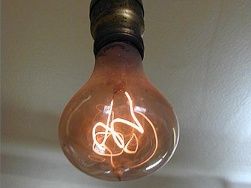 The history of incandescent lamps. In the second half of the 1870s, the idea of electric lighting using conductors heated by electric current was not new. Many scientists, engineers and inventors worked (conducted research and experiments) in this direction, because they clearly saw great prospects for the practical use of electric incandescent lamps. And it is not surprising therefore that in many countries there were inventors of the first incandescent lamp: in the UK - Svan, in Russia - Lodygin, in Germany - Goebel, in the USA - Edison. There were other names.
The history of incandescent lamps. In the second half of the 1870s, the idea of electric lighting using conductors heated by electric current was not new. Many scientists, engineers and inventors worked (conducted research and experiments) in this direction, because they clearly saw great prospects for the practical use of electric incandescent lamps. And it is not surprising therefore that in many countries there were inventors of the first incandescent lamp: in the UK - Svan, in Russia - Lodygin, in Germany - Goebel, in the USA - Edison. There were other names.
So why, then, in the public consciousness of almost all of mankind, a firm opinion was firmly established that it was Thomas Edison who invented the incandescent lamp? This is all the more surprising and incomprehensible, given that in America itself, already in the early 1880s, there were several inventors ...
Who actually invented the light bulb
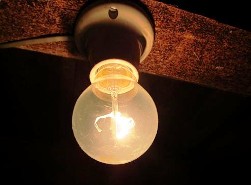 The answers to this seemingly simple question can be heard different. The Americans will undoubtedly insist that it was Edison. The British will say that this is their compatriot Svan. The French may recall the “Russian light” of the inventor Yablochkov, who began to illuminate the streets and squares of Paris in 1877. Someone will call another Russian inventor - Lodygin. There will probably be other answers. So who is right? Yes, perhaps that's all. The history of a light bulb is a whole chain of discoveries and inventions made by different people at different times.
The answers to this seemingly simple question can be heard different. The Americans will undoubtedly insist that it was Edison. The British will say that this is their compatriot Svan. The French may recall the “Russian light” of the inventor Yablochkov, who began to illuminate the streets and squares of Paris in 1877. Someone will call another Russian inventor - Lodygin. There will probably be other answers. So who is right? Yes, perhaps that's all. The history of a light bulb is a whole chain of discoveries and inventions made by different people at different times.
Before proceeding to the chronology of the invention of the light bulb, I would like to note what we mean by the term "light bulb". First of all, it is a light source, a device, a device in which the conversion of electrical energy into light occurs. But the conversion methods can be different.In the 19th century, several methods were known ...
How to save electricity comfortably
 Due to the constant increase in energy prices, people constantly have to pay a lot for them. They will only get used to the same prices, and it will not seem so much - again the increase in prices - and again a lot. Well, people, I suppose, could also save energy. And enterprises do not have to save - you need to work.
Due to the constant increase in energy prices, people constantly have to pay a lot for them. They will only get used to the same prices, and it will not seem so much - again the increase in prices - and again a lot. Well, people, I suppose, could also save energy. And enterprises do not have to save - you need to work.
But to whom it is not enough just to save - it is necessary to produce. You can do everything! What you want. You can, for example, buy a house. And you can build it yourself. And a car. And you can and the power plant. You do not have enough energy - you can buy a windmill, or solar panels - and get electricity. At many agricultural enterprises, and not only on them, it is possible to actively save precious electricity.
The recovery system on electric trains is taken into account by a separate meter. And there are routes when the train returns as much energy to the power grid ...
Incandescent lamp A.N. Lodygina
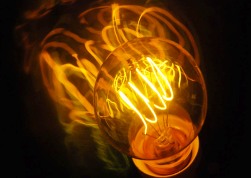 Everyone knows the usual incandescent lamp so long ago and has firmly entered our everyday life, which is perceived as something completely ordinary, taken for granted. But it was not always so. Only in the mid-19th century did the first working lamps begin to be created. Before widespread use was still very far away. Mass distribution of electric lighting systems became possible after Russian inventors created devices that could be used not only in laboratory conditions.
Everyone knows the usual incandescent lamp so long ago and has firmly entered our everyday life, which is perceived as something completely ordinary, taken for granted. But it was not always so. Only in the mid-19th century did the first working lamps begin to be created. Before widespread use was still very far away. Mass distribution of electric lighting systems became possible after Russian inventors created devices that could be used not only in laboratory conditions.
The origins of the study of the possibility of using electric lighting systems lie at the beginning of the XIX century. Back in 1802, our compatriot V.V. Petrov established that with the help of an electric arc "dark calm can be quite clearly illuminated." Searches were conducted in different directions. Some inventors tried to solve the problem by applying directly the flame of an electric arc ...
Russian light of Pavel Yablochkov
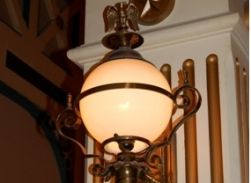 Over a long period of time, many Western European representatives of various fields of science disseminated knowingly false information about our country and our people. According to them, it turned out that there could not be at least some worthy masters or scientists among the Russians. At one time, there was even such a slanderous fiction: "Of the Russian, neither scientists nor artists can be."
Over a long period of time, many Western European representatives of various fields of science disseminated knowingly false information about our country and our people. According to them, it turned out that there could not be at least some worthy masters or scientists among the Russians. At one time, there was even such a slanderous fiction: "Of the Russian, neither scientists nor artists can be."
This lie has firmly entered the minds of many of our compatriots, not to mention those who live in the West. This situation is maintained consciously, forcing many to believe that the best technical innovations and scientific achievements are entirely the merit of Western scientists and masters.
But it is worth taking a closer look at what was created, openly or investigated, how it is discovered that Russian scientists and inventors were in many ways the first, paving the way for further research ...
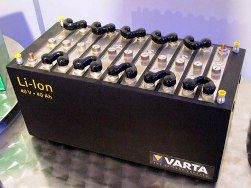 The device (in a few words), advantages and disadvantages. Lead-acid, nickel-cadmium, nickel-metal hydride and lithium-ion batteries.
The device (in a few words), advantages and disadvantages. Lead-acid, nickel-cadmium, nickel-metal hydride and lithium-ion batteries.
Battery technology quietly and firmly entered our lives. Cordless phones, cell phones, cordless power tools, cameras, a variety of toys ... If all this received electricity only from ordinary acid or alkaline batteries, then a significant share of the budget of every Russian family would be spent on batteries. Therefore, you often catch yourself thinking: how did we even live without household batteries before?
Batteries are electrochemical devices capable of storing and delivering electricity. However, behind such a simple definition lies a wide variety of designs and principles of operation of various batteries ...
